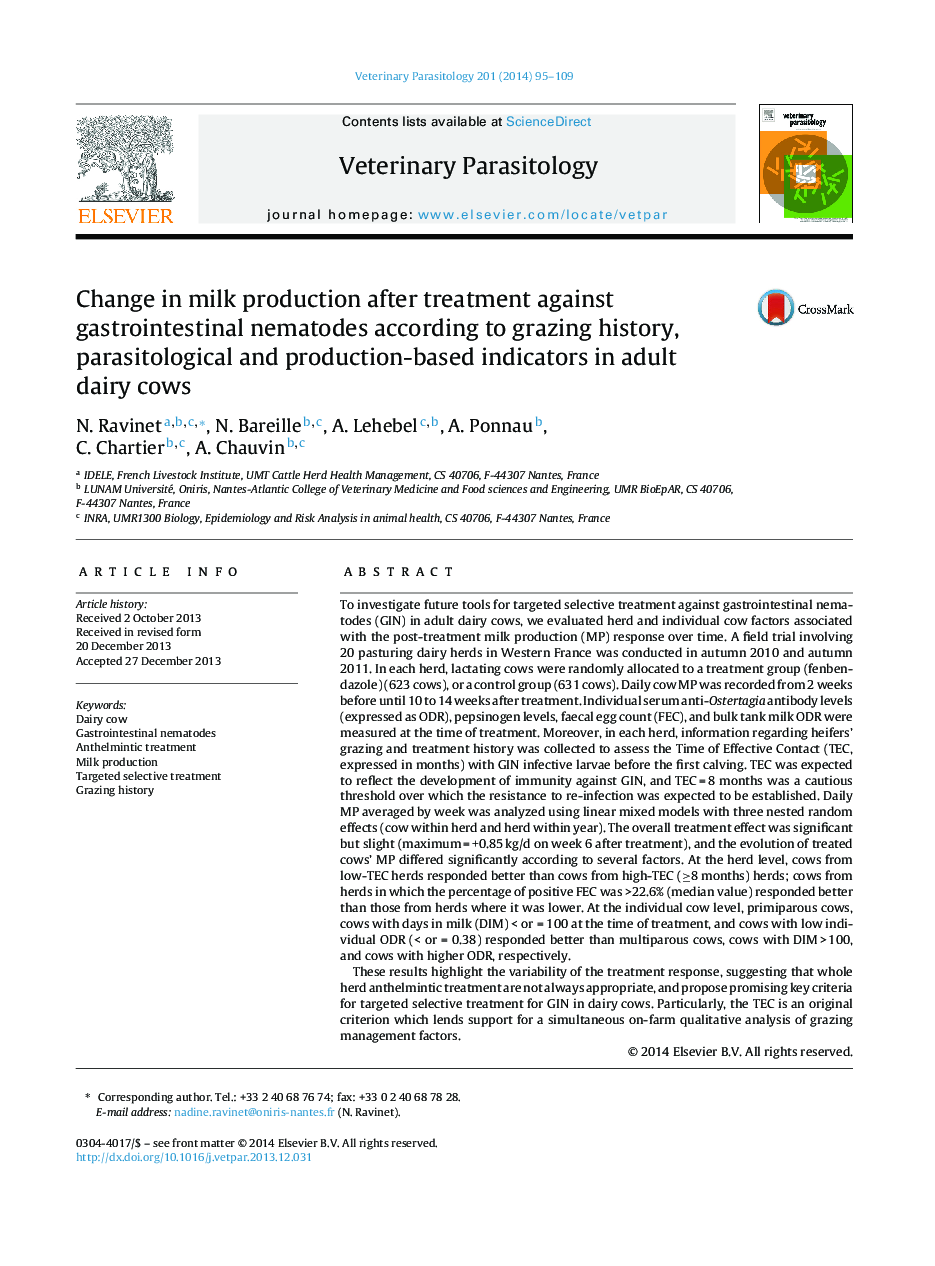| کد مقاله | کد نشریه | سال انتشار | مقاله انگلیسی | نسخه تمام متن |
|---|---|---|---|---|
| 5803297 | 1555689 | 2014 | 15 صفحه PDF | دانلود رایگان |
To investigate future tools for targeted selective treatment against gastrointestinal nematodes (GIN) in adult dairy cows, we evaluated herd and individual cow factors associated with the post-treatment milk production (MP) response over time. A field trial involving 20 pasturing dairy herds in Western France was conducted in autumn 2010 and autumn 2011. In each herd, lactating cows were randomly allocated to a treatment group (fenbendazole) (623 cows), or a control group (631 cows). Daily cow MP was recorded from 2 weeks before until 10 to 14 weeks after treatment. Individual serum anti-Ostertagia antibody levels (expressed as ODR), pepsinogen levels, faecal egg count (FEC), and bulk tank milk ODR were measured at the time of treatment. Moreover, in each herd, information regarding heifers' grazing and treatment history was collected to assess the Time of Effective Contact (TEC, expressed in months) with GIN infective larvae before the first calving. TEC was expected to reflect the development of immunity against GIN, and TEC = 8 months was a cautious threshold over which the resistance to re-infection was expected to be established. Daily MP averaged by week was analyzed using linear mixed models with three nested random effects (cow within herd and herd within year). The overall treatment effect was significant but slight (maximum = +0.85 kg/d on week 6 after treatment), and the evolution of treated cows' MP differed significantly according to several factors. At the herd level, cows from low-TEC herds responded better than cows from high-TEC (â¥8 months) herds; cows from herds in which the percentage of positive FEC was >22.6% (median value) responded better than those from herds where it was lower. At the individual cow level, primiparous cows, cows with days in milk (DIM) < or = 100 at the time of treatment, and cows with low individual ODR (< or = 0.38) responded better than multiparous cows, cows with DIM > 100, and cows with higher ODR, respectively.These results highlight the variability of the treatment response, suggesting that whole herd anthelmintic treatment are not always appropriate, and propose promising key criteria for targeted selective treatment for GIN in dairy cows. Particularly, the TEC is an original criterion which lends support for a simultaneous on-farm qualitative analysis of grazing management factors.
Journal: Veterinary Parasitology - Volume 201, Issues 1â2, 17 March 2014, Pages 95-109
